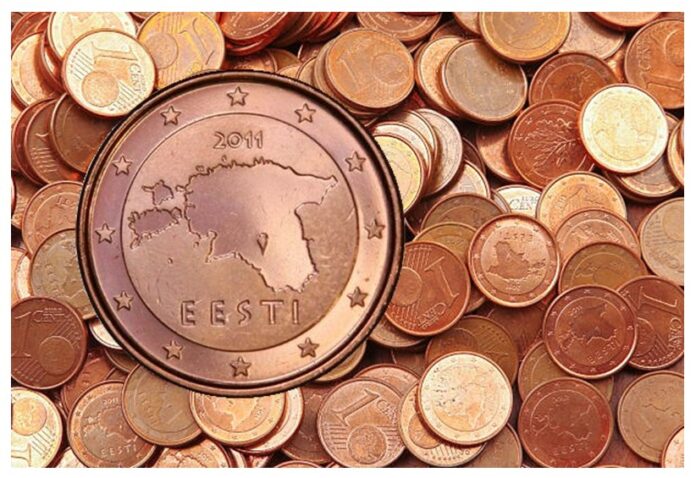
The Bank of Estonia announced on the 25th October through their press department that they have ordered 10 million one cent coins from Slovakia’s Kremnica Mint in an effort to meet the needs of merchants demanding low value euro-cent coins for use with cash payments in the years ahead. As Estonians readily circulate five-cent coins and larger coin denominations routinely, the Bank deems there are sufficient quantities of the six higher denominations to meet the demands of the public.
Those denominations, 5 euro-cents to €2 which the central bank reports are in sufficient quantity and as such do not need to order new supplies of these coins every year. The Bank of Estonia reported that an average of two truckloads of new one and two-cent copper coloured coins are brought to Estonia every year. As with many countries who are part of the Euro-zone, those who receive the two smaller coin values during cash transactions as a rule, do not re-circulate them but rather deposit into their bank accounts larger quantities, exchange them at post offices or simply save them up. The reason for this is that throughout much of the Euro-zone, the 1and 2 euro-cent coins have no buying power as individual or stand-alone denominations.
Smaller Denominations in the European Union
The Bank of Estonia, who introduced the single currency into use in Estonia in 2011, have started a discussion about whether the circulation of one and two-cent coins should be limited or discontinued with rounding prices to the nearest 5 cents should be introduced. If Estonia does introduce this rule, they will not be alone as their neighbours across the Gulf of Finland abandoned use of these two coins almost immediately after the introduction of the Euro in 2002. In 2004, the Dutch Central Bank announced they would discontinue the distribution of 1 and 2 euro-cents. The Central Bank of Ireland announced the practise of “rounding” in 2013 with a great public awareness campaign. In 2014, it was the turn of the National Bank of Belgium who announced they would no longer support the use of the two smaller coins which are part of the euro-system and the Banca D’Italia announced in 2018 they would also halt the distribution of the two smaller euro-cent denominations. Throughout the Euro-zone, it should be pointed out that these coins remain legal tender and, those countries authorised to mint or issue their own national versions of Euro-coins must by EU regulation produce or authorise their release. These specially minted examples are routinely included in collector’s Mint and Proof sets issued for coin collectors. Concern has also been raised regarding the overall production costs by various treasuries of producing these copper-plated steel coins and that their seigniorage or profit earned by a government when issuing currency, which is either very close to their production cost or running at a deficit.
Rounding Rules to be Introduced in Estonia?
The Bank of Estonia have offered advice on the rule of rounding of prices. They have reiterated that it is not individual items for sale or services that should be either rounded up or down but rather collectively for the final total at the point of sale that would be affected and only for cash purchases. Studies have shown that experiences from other countries who have put this practise in place have indicated that rounding up or down does not exponentially raise prices overall. However, rounding is effective in substantially reducing the use of one and two-cent coins.
A Eurobarometer survey carried out last year showed that 71% of Estonian consumers would be in favour of the idea of introducing rounding rules. Estonia’s legacy currency the Kroon when first reintroduced in 1992 was easily converted to the Euro as soon as the irrevocable rate of exchange was set for the Deutschemark against the single currency in 1999. Since the Kroon was officially valued against the German currency at a rate of 8 per DM, as such the value of the Krooni against the Euro was routinely traded at EEK 15.65. At the time of its introduction in 2011, the one euro-cent coin was equal in exchange to the previous 15.6 senti and the 2 euro-cent coins equal to 32 senti. The smallest Estonian coin within the Krooni currency was the 10 senti coin. The new consignment of 10 million one euro-cent coins equates to just 7.55 coins per person for the whole of the country’s population of 1,324,000.
The author, Michael Alexander, is president of the London Banknote and Monetary Research Centre.
For additional information on the coins and banknotes in circulation in Estonia, please visit the Eesti Pank website.
The last years have seen many discussions about small change around the world. Just check it out in our archive where you will find many articles on the subject of smaller denominations.



